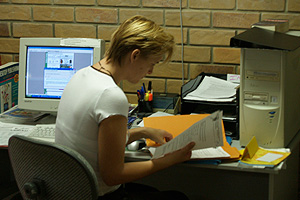
Commercial Non-Fiction Publishing Course
Every publisher will answer the same question, but in a different way:
“What to publish?”
Some establish a limited repertoire of publication activities, focusing on academic books, novels, westerns, romance novels, text and educational books, informative or self-help books or material on specific topics such as health and wellbeing, ostrich farming etc., fashion or gardening magazines, music scores etc.
Other publishers will engage in a wider range of activities, publishing books, journals, monographs and newspapers in their different branches. The nature of the publishing enterprise will determine what kinds of texts they will publish, and how they choose which texts to publish.
All publishers share one thing in common though: that being their primary concern is to maintain a viable business operation. This course focuses on the Business side of publishing.
Publishing enterprises include small book publishers and large publishing houses, magazine publishers, desktop publishers, e-zine publishers, self-publishing enterprises, and non-profit organisations involved in publishing, such as universities, galleries, professional bodies, community groups.
All of these publishers follow a similar 6 step cycle in producing their work:
- Writing or commissioning the document (for commissioned works); accepting a manuscript for publication
-
Editing and proofreading
-
Designing the document and preparing artwork
-
Typesetting
-
Printing
-
Marketing and distributing the publication.
While a production manager generally oversees this production process, a publisher will oversee that person and others controlling the spending and ensuring each project remains viable.
This course will help you understand these and other business requirements and practices in the publishing industry.
COURSE CONTENT
There are seven lessons in this module/course as follows:
- What to publish in commercial non-fiction
- The difference between non-fiction and commercial non-fiction
- Using strong voice and narrative
- Types of non-fiction
- Non-fiction genres
- Using reader interest and expectations to help decide what to publish
- Identifying a perceived need
- Using cost and profit-making potential to make decisions
- Planning a New Publication : Developing a Non-Fiction Book Proposal
- Why self-publishers need a book proposal
- Considering the publisher/business perspective
- What the author wants vs. what the reader wants
- Questions to ask and answer in the book proposal
- Starting the publication process
- Editing and proofreading
- Typesetting
- Standard book sizes
- Financial Management and Costing a Publication
- Overview of potential outside services required for self-publishing
- Print vs eBook
- Market analysis for publishing in print
- Competitor analysis
- Estimating initial print run
- Creation costs
- Production costs
- Marketing costs
- Distribution costs
- How royalties work
- Managing Resources and Expectations
- Comparing resources for print vs ebooks
- Print on demand
- Just-in-time printing
- Overview of print expenses
- Resources required for ebook publishing
- Analysing the market
- Developing a business plan
- Business plan framework
- Risk Management
- Financial Risks
- Scalability and Risk Management
- Production
- Copyright
- Legal risks
- Protecting intellectual property, including DRM and IRM
- Managing Writers and Illustrators in the Freelance Market
- Types of freelancers and their services
- Working with publishers, writers, and illustrators
- Why authors choose to write
- Specialist professionals and consultants
- Managing Production, Distribution, and Author Promotion
- Sales agencies, PR, and conferences
- Establishing an author platform
- Networking
- Social media
- Media releases
- Timing of production and distribution
- Quality control
- Marketing approaches, including total market approach, market segmentation, and developing the marketing mix
DURATION 100 hours
AIMS
- Discuss the important considerations that affect the decision of what to publish.
- Describe the process of planning the publication of a non-fiction book.
- Discuss the financial requirements to produce a new publication.
- Develop procedures for managing staff, freelancers and other resources in a self-publishing business.
- Demonstrate insight into the different types of potential risks in a publishing business, including legal and financial risks.
- Develop an improved capacity to work effectively with colleagues in the publishing industry.
- Develop procedures for the management of production, and distribution of a publication.
 What Resources are Needed to be a Publisher
What Resources are Needed to be a PublisherThe good news is that almost anyone can be a publisher today, at least on the internet. If you are prepared to work hard, and multi task; it is much less costly to get a start, than what it was in the past. Here is some of what might be needed though:
Staff
What staff will be required during the production stages?
Production Resources
What specialised equipment is required?
Printing
Marketing and distribution
Materials
If the publication is a book, newspaper, magazine, journal or other printed matter, also consider the materials required:
Quantity
Market research is essential to making accurate or reasonable predictions:
Distribution
Distribution involves the method and points of distribution, and the quantities to be distributed:
-
Will the publication be sold or free?
-
Will it be distributed through one-off sales or subscription, or supplied with something else, such as a society membership?
- Would it be better to use single or multiple distribution points?
WHAT NEXT?
Register to Study - Go to “It’s Easy to Enrol” box at the top of the page and you can enrol now.
or
Get Advice – Email us at info@acsedu.co.uk OR
Use our FREE COUNSELLING SERVICE to contact a tutor
CLICK TO CONTACT US